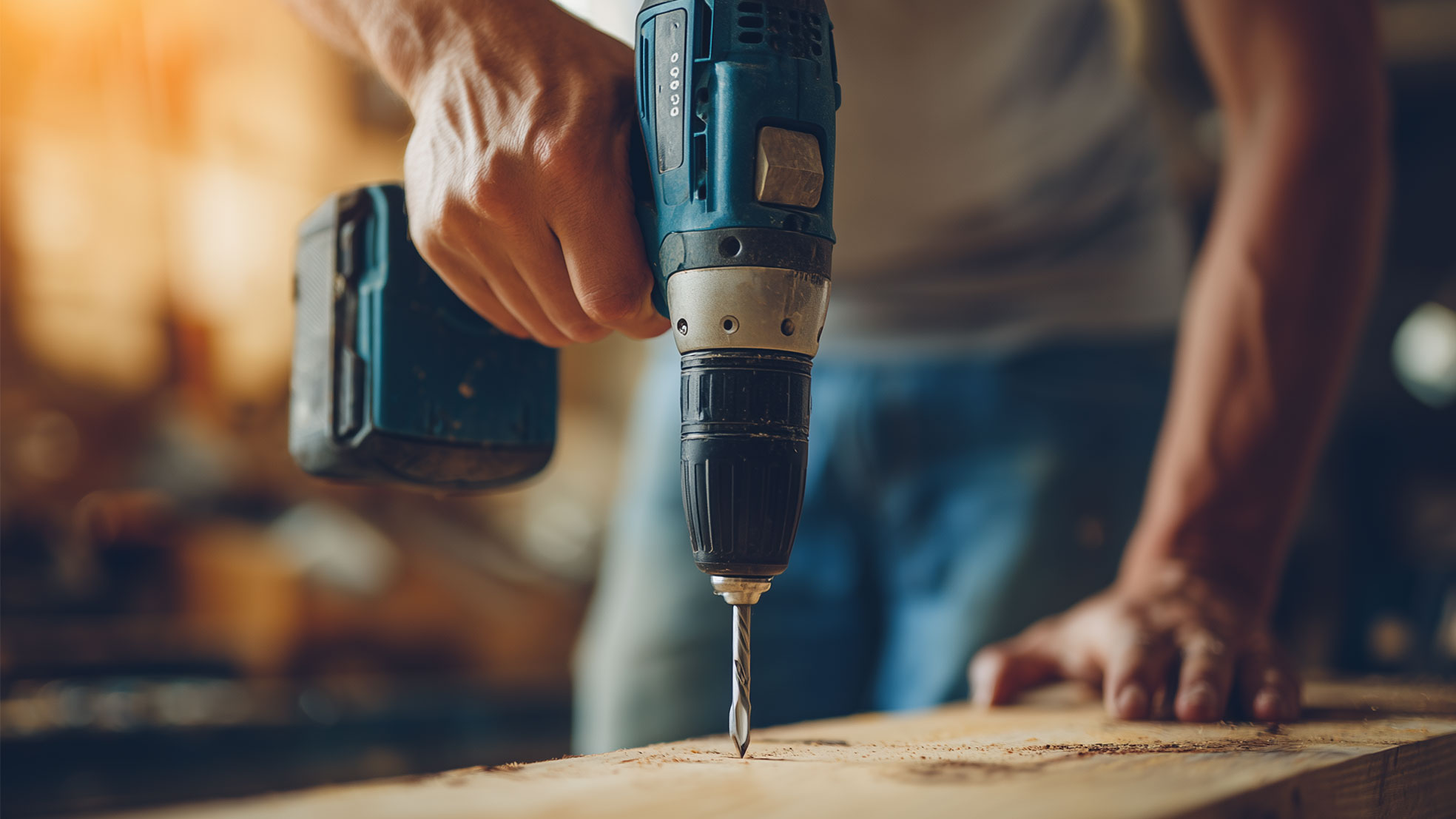One of the most useful tools for any installation or remodelling project is a cordless drill because it is portable, strong, and always accessible. However, it's important to consider whether your drill is actually prepared before beginning your next task.
It takes a moment to get ready for even the most sophisticated battery-powered models. Particularly in upscale kitchen and bathroom settings where accuracy is crucial, neglecting basic inspections can result in stripped screws, uneven finishes or damaged materials. These five easy steps will help guarantee that every turn of the drill produces neat, assured results, whether you're a professional outfitting high-end interiors or a homeowner remodelling your space.

This guide ensures that your cordless drill performs as diligently as you do by outlining key steps which makes for peak performance.
The battery itself is where your battery drill's performance begins. Before you start, make sure it's fully charged, but also take a moment to look at its condition. Is it swollen, draining too quickly, or overheating? These are indicators that your battery might be dying, and using it further could harm your drill or endanger your safety.
Lithium-ion batteries may respond differently to temperature changes in colder regions like Sweden or during intense summer renovations in Spain. Your projects will continue to function properly if you purchase high-quality replacements and maintain a spare battery on hand.
Pro Tip: To prolong the life of your batteries, store them in a cool, dry location and don't use them all the way through.
The part that secures your drill bit in place is called the chuck. Your results may be inaccurate or even dangerous if it is not tightened correctly or if the bit does not sit evenly.
Test your grip strength by opening and closing the chuck a few times before drilling. After that, make sure your drill bit is locked in and centred. Particularly when working on delicate surfaces like tile or cabinetry finishes, a loose bit can wobble and harm materials.
Recall that accuracy is just as crucial as strength in design-led tasks.
Using the incorrect drill bit can cause your motor to burn out, split materials, or strip screws. Make sure your bit is appropriate for the task (e.g., drilling, screwing, or anchoring) and the material (e.g., concrete, metal, tile, or wood) before you start.
Choose coated or diamond-tipped bits made for low friction and clean results if you're working with high-end surfaces like stainless steel handles or ceramic splashbacks. For meticulous renovators and interior designers, these are essential.
Purchasing a full set of drill bits gives you versatility and guarantees that you're never using the incorrect instrument when improvising.
With the speed and torque controls on modern battery drills, you can adjust the power to the job. Before beginning your project, test these settings on a scrap piece of tile, plasterboard or wood.
While high torque works well with tougher materials like thick hardwoods or masonry, lower torque is best for delicate tasks like mounting lighting fixtures. Precision drilling into designer surfaces requires control over depth and dexterity, which variable speed provides.
Even if you're doing it yourself, a well-calibrated drill produces results that appear professionally installed.
Verify the security of any accessories, such as belt clips, dust extraction attachments, or auxiliary handles, before each use. Verify that the safety features on your drill, such as the LED indicators or electronic brakes, are operating as intended.
Professionals typically wear gloves, safety glasses, and a dust mask; homeowners should do the same, particularly when working in confined indoor areas.
Make sure the built-in light on your drill is working. When working under cabinets, in corners, or during late-night installations, it's critical to have good visibility.
In addition to being good practice, checking your battery drill a few minutes before each use is crucial for efficiency, safety, and safeguarding the materials you're working with. These five checks guarantee that your tools consistently produce results on par with those of a professional, whether you're installing a sleek kitchen backsplash, putting together custom cabinetry, or fastening lighting fixtures.
In addition to lasting longer, well-maintained tools perform better, feel better in the hand, and improve the results of all projects, no matter how big or small. Being prepared is crucial when accuracy is required.







